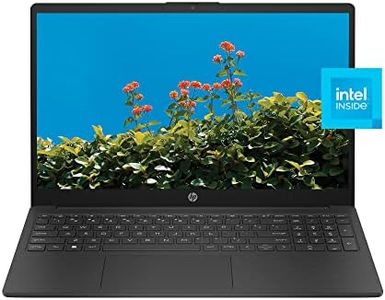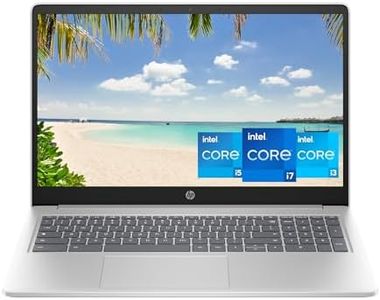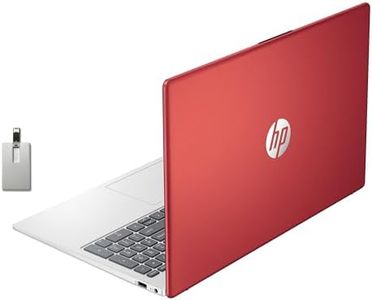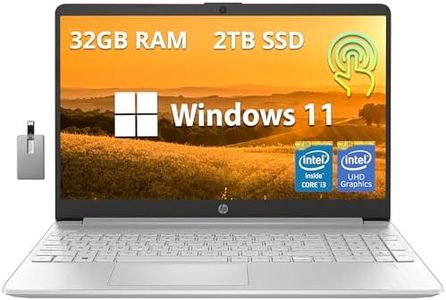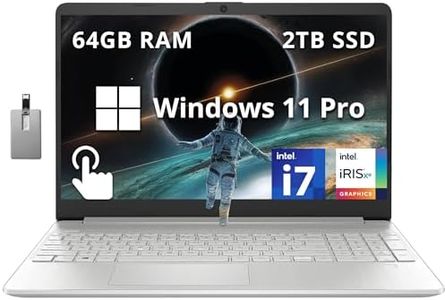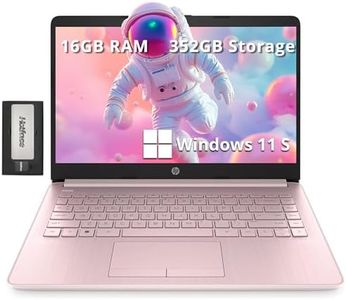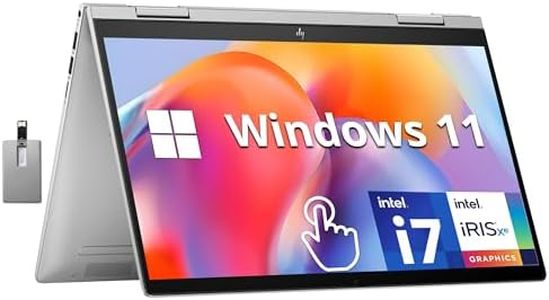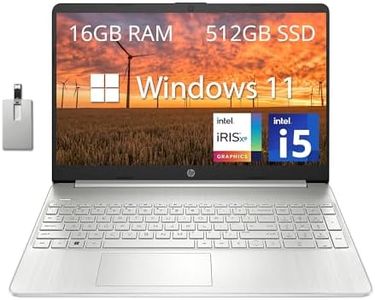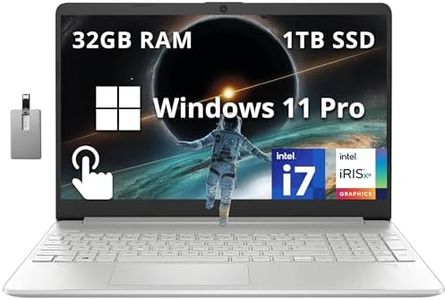10 Best HP Laptops 2025 in Canada
Our technology thoroughly searches through the online shopping world, reviewing hundreds of sites. We then process and analyze this information, updating in real-time to bring you the latest top-rated products. This way, you always get the best and most current options available.

Our Top Picks
Winner
HP 15 inch Laptop, HD Display, Intel Processor N100, 4 GB RAM, 128 GB UFS, Intel UHD Graphics, Windows 11 Home in S Mode, 15-fd0000ca
The HP 15-inch Laptop with an Intel N100 processor and 4 GB of RAM is designed for basic everyday tasks like browsing the web, streaming videos, and light work. Its 15.6-inch HD display offers decent image quality, suitable for watching shows or casual use, although the resolution (1366x768) is on the lower side compared to Full HD screens. The 128 GB UFS storage is fast and energy-efficient but may feel limited if you store lots of files, so consider external storage if needed. Battery life is promoted as long-lasting with HP Fast Charge, making it a good option for on-the-go use.
Build quality appears solid and includes sustainable materials, but at around 2.1 kg, it’s moderately portable rather than ultra-light. Connectivity is well-covered with Wi-Fi 6 and multiple USB ports, although only one USB 3.0 port might feel restrictive if you connect many devices simultaneously. The keyboard benefits from a numeric keypad, which is handy for number entry, and the touchpad is expected to be responsive for general use. The integrated Intel UHD Graphics can handle basic visuals but is not suited for gaming or heavy graphics work.
Windows 11 Home in S Mode means the system focuses on security and performance, though switching out of S Mode is needed to install apps outside the Microsoft Store. This laptop is suitable for students, home users, or anyone needing a reliable and affordable machine for straightforward tasks rather than power-hungry applications.
HP Chromebook 15.6 inch Laptop, Full HD Display, Intel Core i3-N305, 8 GB RAM, 256 GB UFS, Intel UHD Graphics, Chrome OS, 15a-nb0006ca (2023)
The HP Chromebook Plus 15.6-inch laptop offers a solid balance for users looking for an affordable, portable device mainly for everyday tasks like browsing, streaming, and light productivity. Its Intel Core i3-N305 processor combined with 8 GB of efficient DDR5 RAM provides smooth performance for Chrome OS applications and multitasking. The 256 GB Universal Flash Storage is a nice upgrade over typical eMMC storage, offering faster data access and more space for files and apps. The 15.6-inch Full HD IPS display delivers clear, vibrant images with wide viewing angles and an anti-glare coating, which is helpful for working in bright environments. Battery life is impressive at around 13 hours, allowing for a full day of use without frequent recharging. The build feels solid and the laptop is reasonably portable for its size, though at 2.4 kg it’s not the lightest option.
In terms of connectivity, it includes USB 3.0 and USB 2.0 ports plus Bluetooth and Wi-Fi support, covering basic needs but lacking newer standards like USB-C or Thunderbolt. The keyboard and touchpad are standard for Chromebooks, with a comfortable layout and useful dedicated Google search key, plus privacy features like a camera shutter and mic mute button enhance user control. Since it runs Chrome OS, this laptop is best suited for users who primarily work online and use Google apps. It’s not ideal for heavy software or gaming but can handle 720p gaming and 4K streaming thanks to integrated Intel UHD graphics. Environmentally, it includes recycled materials, which is a nice touch.
This Chromebook is well suited for students, casual users, and anyone looking for a dependable, eco-conscious laptop with a large display and strong battery life. However, those needing advanced ports or requiring offline software might want to consider other options.
Buying Guide for the Best HP Laptops
Choosing the right HP laptop can feel overwhelming because there are so many options, each designed for different needs. The best way to start is by thinking about how you plan to use your laptop most of the time. Are you looking for something light and portable for travel or school, or do you need a powerful machine for work, gaming, or creative projects? Once you know your main use, you can focus on the features that matter most for your daily tasks. Understanding the key specifications will help you make a smart choice that fits your lifestyle and ensures your laptop will serve you well for years.Most Popular Categories Right Now
